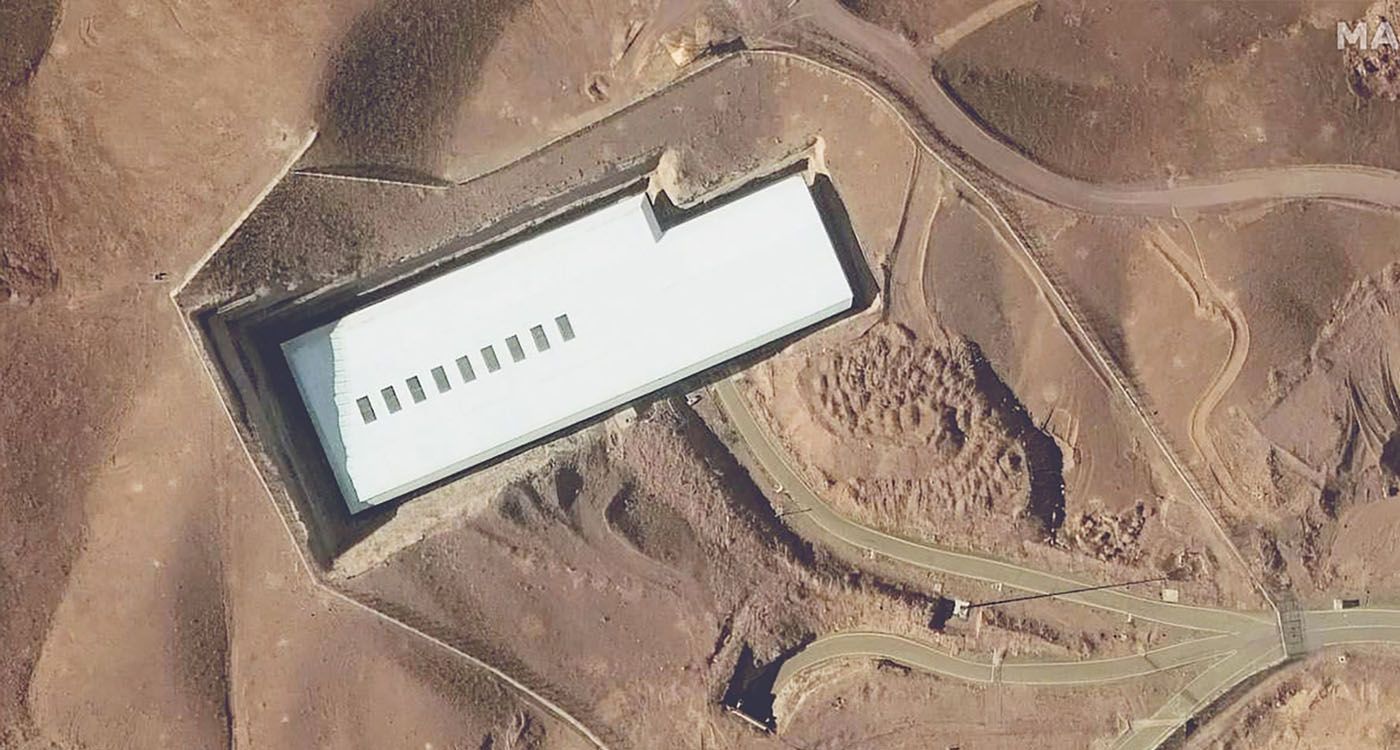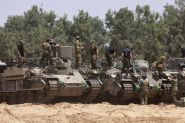- Home
- Middle East
- Fordow: Deep Inside Iran’s Nuclear Core

©Image satellite / Maxar Technologies / AFP
Deep in the Iranian mountains, near the holy city of Qom, lies one of the most heavily guarded nuclear facilities in the world: the Fordow uranium enrichment site, a pivotal hub of Iran’s nuclear program.
Shielded by the Mountain
Buried nearly 90 meters beneath solid rock, the Fordow facility symbolizes Tehran’s nuclear determination and poses a near-impenetrable challenge for its adversaries, especially Israel.
Revealed in 2009 by the International Atomic Energy Agency (IAEA), the site is located about 30 kilometers northeast of Qom, on land formerly owned by Iran’s Revolutionary Guard. It contains two underground halls, each designed to house eight cascades of IR-1 centrifuges—roughly 3,000 in total.
Protected by over 80 meters of rock, reinforced blast doors and an S-300 air defense system, Fordow was built to withstand conventional airstrikes.
History and Context
The Fordow project dates back to the early 2000s as part of Iran’s secret military nuclear program, code-named “Al-Ghadir.”
Documents seized by the Mossad in 2018 suggest that construction likely began between 2002 and 2007, initially aiming to produce uranium enriched to 90%—enough for one or two nuclear weapons per year. The site remained clandestine until its exposure in September 2009 under international pressure.
Iran claimed it was a civilian facility designed to produce low-enriched uranium for medical and energy uses. However, the site’s deep underground location and heavy fortifications quickly rekindled suspicions of a military purpose.
Since then, Fordow has been widely regarded as the strategic core of Iran’s nuclear program. The deployment of S-300 missile batteries there further underscores its critical importance to Tehran.
Strategic Role in Iran’s Nuclear Program
Fordow is Iran’s second-largest uranium enrichment facility after Natanz and has played a pivotal role in advancing the country’s nuclear ambitions.
Originally, the site produced uranium enriched to 5% for civilian purposes. In 2011, Iran began enriching uranium to 20% at Fordow—officially to supply medical isotopes but primarily to test international red lines.
The 2015 nuclear deal and the Joint Comprehensive Plan of Action (JCPOA) froze these activities. Tehran agreed to suspend all enrichment at Fordow for 15 years, converting the site into a research center for stable isotopes. Only 1,044 IR-1 centrifuges remained operational, strictly for non-nuclear use and under IAEA supervision.
However, according to the Hudson Institute, a US-based think tank, Iran resumed enriching uranium to 20% in January 2021. Newly elected US President Joe Biden had signaled an end to the Trump administration’s maximum pressure policy and sought a swift return to the JCPOA framework.
Despite these efforts, the Hudson Institute reports that Iran further increased enrichment levels to 60%, even as the Biden administration pursued diplomatic engagement. During this period, Iranian proxies attacked US forces in Syria and the Quds Force allegedly plotted assassinations targeting former US officials, including former National Security Advisor John Bolton and former Secretary of State Mike Pompeo.
In November 2024, IAEA Director Rafael Grossi visited Fordow, which housed new cascades of advanced centrifuges. By then, Fordow had become a critical strategic node—capable, if Iran fully severs ties with the IAEA, of rapidly transitioning to military-grade fissile material production.
How to Neutralize Fordow?
Neutralizing Fordow by force is a daunting military challenge. Its deep underground location and heavily reinforced structure require powerful bunker-busting munitions.
The GBU-28, developed during the Gulf War, is a well-known laser-guided bomb weighing around 2,300 kg, capable of penetrating several meters of concrete. However, it is insufficient against Fordow’s tunnels, protected by over 80 meters of rock.
The most effective weapon for this target is the GBU-57A/B Massive Ordnance Penetrator (MOP). Weighing 13,600 kg and measuring six meters long, it can penetrate approximately 60 meters of reinforced concrete or solid rock before detonating. Its steel casing is designed to breach the densest layers before unleashing 2,400 kg of explosives.
Deploying an MOP is complex and requires a strategic bomber like the B-2 Spirit, one of the few aircraft capable of carrying such a heavy bomb.
Even with this weapon, a single strike would likely not be enough to neutralize the entire site. Multiple strikes on the same point or a series of coordinated attacks would be necessary to effectively collapse the underground tunnels.
Limitations and Risks of an Airstrike
Fordow is heavily shielded by the mountain above it. Its thick layers of rock and reinforced concrete absorb much of the impact from conventional munitions.
According to the Bulletin of the Atomic Scientists, only MOPs have the capability to penetrate to the required depth. However, Israel lacks both these weapons and the strategic bombers needed to deliver them.
Without direct US support, any Israeli operation would likely devolve into a prolonged war of attrition—repeatedly striking the same target or resorting to high-risk commando raids to plant explosives inside the tunnels.
Beyond the technical challenges, such an attack would sharply escalate regional tensions. Neutralizing Iran’s air defenses would be a prerequisite, followed by simultaneous strikes on multiple nuclear sites to overwhelm retaliation efforts.
Fordow thus stands as a cornerstone of the Islamic Republic’s deterrence strategy. Given the current realities, only direct US involvement could realistically neutralize the site—at significant strategic cost.
Read more





Comments